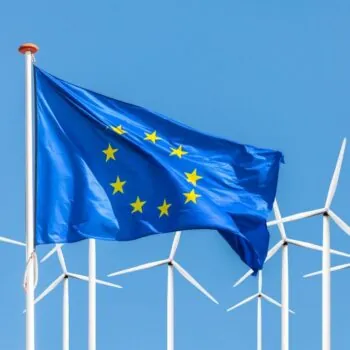A major new report published this week shows that a zero carbon European power sector can be achieved at comparable levels of cost and reliability as the current high-carbon trajectory.
The Roadmap 2050 study, led by the European Climate Foundation (ECF), modeled the macroeconomic, grid and system security implications of a range of pathways to a zero carbon power sector, based on different levels of renewables, CCS and nuclear generation.
Based on these analytics, the policy aspect of the report was co-authored by E3G and ECF to kick-start the conversation amongst policy makers, regulators, investors and other stakeholders about how a decarbonised power sector and an 80-95% economy-wide carbon reduction can be achieved.
Nick Mabey, E3G’s CEO comments:
“The report shows the benefits of the low-carbon pathway far outweigh the challenges and that a commitment now to a low-carbon transformation of the energy sector is the winning strategy for competitiveness, jobs and prosperity in the UK and Europe. Achieving a minimum 80% CO2e reductions in 2050 based on zero carbon power generation in Europe is technically feasible and makes compelling economic sense.”
The core elements to enabling these changes, the report argues, are:
- Aggressively pursuing energy efficiency gains, and recognising energy efficiency as an essential zero-carbon supply-side resource;
- Commercialisation of a variety of emerging low carbon generation options (such as offshore wind, solar PV and carbon capture and storage), and energy market reform to ensure timely retirement of high carbon assets and investment in sufficient replacement low carbon infrastructure;
- Increasing grid interconnections between power systems to balance different forms of generation, and significantly improving ‘demand response’ through smart grid applications.
Recommendations
Specific areas for the EU to progress are:
- Action to convert the non-binding 2020 efficiency goal into a firm requirement to deliver the target, whilst allowing Member States flexibility in how to do so;
- The need to develop the EU ETS to meet current 2050 greenhouse gas reduction goals, alongside additional, complementary measures that reinforce incentives to invest in low/zero carbon resources, rule out investment in long-lived high-carbon generation and overcome market barriers to energy efficiency measures;
- A new ‘Climate and Resources’ framework to create the policy mix that will efficiently deliver the climate targets and address resource constraints across sectors beyond 2020 and out to 2050;
- A review of EU budget allocation to ensure appropriate funding is allocated to investments in renewables, CCS, energy efficiency and network infrastructure;
- Expansion of the ACER/ENTSO-E mandates to develop a strategic interconnection plan out to 2050 and to ensure it facilitates full decarbonization and the optimisation of resources across Member States.
Key areas for Member States to progress are:
- Adopt aggressive targets and strategies for the deployment of energy efficiency measures that will double to triple the current rate of overall energy efficiency improvement;
- Consider the need for deployment targets beyond 2020 for key renewables generation technologies such as off-shore wind, solar PV; consider parallel deployment strategies for carbon capture and storage, especially in heavy industry;
- Initiate a review of wholesale market arrangements to ensure that incentives promote investments in energy efficiency and other demand-side resources, system balancing and low carbon generation sources in addition to supporting efficient cross border trading;
- Explore regional alignments with neighbouring Member States around strategic low-carbon resource development, networks planning and execution, and wholesale market design and operation;
- A review of the mandate of the network regulators within the framework of the internal energy market to create a robust investment framework that enables the upgrade and roll-out of smart infrastructures at transmission and distribution levels;
- Establish a timetable for the implementation of fully smart power networks, maximising opportunities for demand response and distributed generation;
- Review spatial and environmental planning laws to ensure they are fit for purpose;
- Ensure that sources of funding, financial institutions and risk allocation are appropriately aligned to ensure that the new low carbon infrastructure can be readily and cost-effectively financed.


